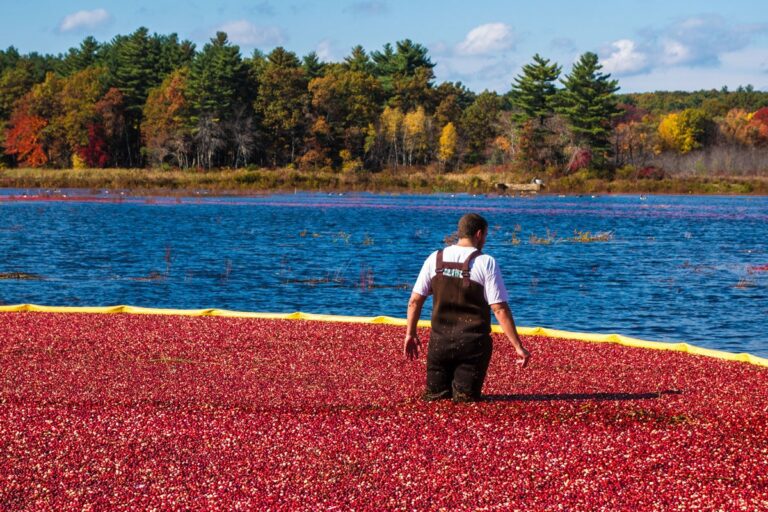If significant climate change occurs in the United States, some foods may need to change where they are produced in order to meet consumer demand. In an article published online this week in the journal Renewable Agriculture and Food Systemsresearchers at the Friedman School of Nutrition Science and Policy at Tufts University provide an overview of current agricultural land use and food production in the northeastern US, identifying potential vulnerabilities of the 12-state region*.
Led by Tim Griffin, Ph.D., associate professor and director of the Agriculture, Food and Environment Program at the Friedman School, the authors assessed the extent to which the Northeast can meet the food needs of its residents, a concept known as regional self-reliance. Their results are based on calculations of regional agricultural land use and production between 2001 and 2010. In that period, over 100 crops were harvested and livestock production involved all six major species. The authors' estimates also include fish and shellfish.
“Food production in the United States is concentrated in certain regions, but it is important to explore the ability of all regions to produce food. That's certainly the case in the Northeast, which has both a high population density and a declining agricultural land base,” Griffin said. “For example, most of the nation's pork products come from Iowa and North Carolina, and most of the lettuce is grown in California's Salinas Valley. Looking ahead, there is the possibility that climate change will disrupt food production in these key sectors. If irrigation in California's Central Valley were to decline due to climate change, could other regions compensate for this decline in production? And what is the capacity of the North-East region to produce more?'
Griffin and colleagues observed significant diversity in the Northeast food system, particularly for crops. “A different picture emerges when you look at the extent of cropland,” Griffin said. “A small number of crops take up much of the crop area and almost 40% of that is maize, most of which is used for animal feed. A small percentage of this area produces food that people eat, such as apples and potatoes, although much of it contributes indirectly by supporting livestock production systems.”
Griffin and colleagues found that regional self-sufficiency is highest for animal products, particularly milk and eggs. The region produces about as much liquid milk as it consumes and about 70% of the amount of eggs consumed. For seafood, the region produces 45% of the shellfish it consumes and 23% of the fish. Just under 30% of the amount of chicken consumed in the region is also produced there.
For vegetables, the region produces 26% of the amount it consumes and for fruit 18%. The most widely grown vegetable crops are starchy products such as potatoes and corn. In the fruit category, the region is most self-sufficient in berries, mainly blueberries and cranberries.
Regional self-sufficiency in the Northeast will likely be affected by two other factors: population growth and dietary choice. The US Department of Commerce projects that there will be an additional two million people living in the Northeast by 2030 (an increase of about 3%). “Regional self-sufficiency would be affected if there was a shift toward eating more of the federal dietary guidelines, which emphasize fruits, vegetables and low-fat dairy products,” Griffin noted.
The authors note that agricultural development in the region will be challenging due to land use patterns. More than half of the region's total farmland is in Pennsylvania and New York, with Maryland accounting for about an additional 20 percent. Another barrier is limited supply chain infrastructure, which hinders packaging and distribution.
“Our future research will examine the complex interactions between soil suitability, climate, land use and infrastructure, and explore policy barriers to agricultural expansion and the incentives that can be provided to address them,” Griffin said. . “First, we need to create a basis for considering all possible changes. If we are going to change the types of food grown on farms, where will that happen and where would there be the greatest potential for increased production?” *The 12 northeastern states included in the study are: Connecticut, Delaware, New York, Pennsylvania, Maryland, Maine, Massachusetts, New Hampshire, New Jersey, Rhode Island, Vermont and West Virginia.



